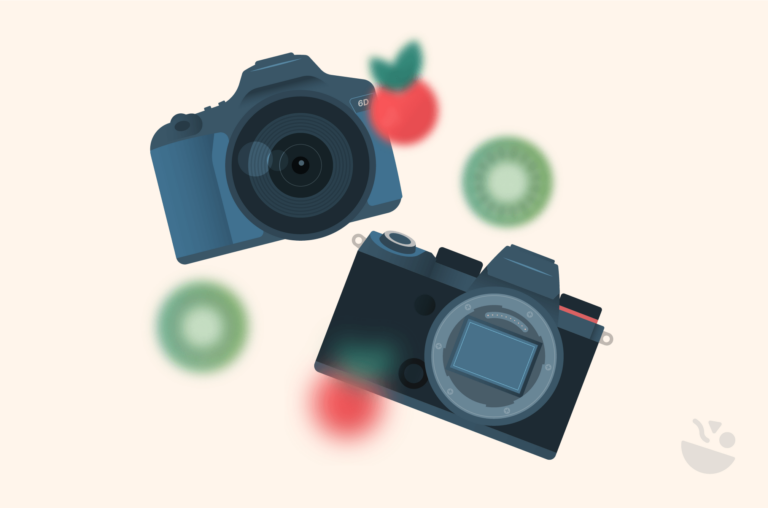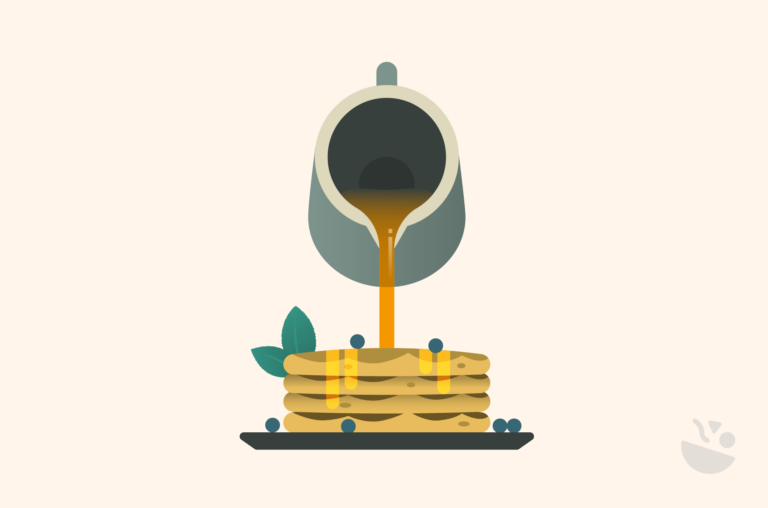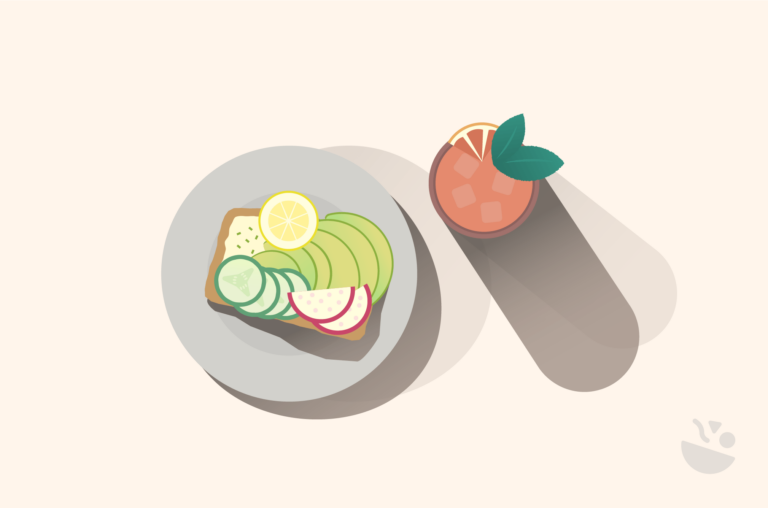You can’t guarantee sunny weather on photoshoot day. One day, it’s shining through your window just right; the next, it’s gone, leaving your food looking flat and dull. Instead of chasing daylight, artificial lighting for food photography gives you full control, letting you shoot anytime, anywhere with consistent, professional results.
Worried it won’t look natural? Don’t. With the right setup, you can create soft, natural-looking images that make food look especially mouthwatering. And lucky for you, we’re laying it all out on the table – plus a few bonus tricks you won’t want to miss!
Why you should use artificial lighting in your food photography
Natural light is beautiful, but it isn’t always reliable. Cloudy days, short winter afternoons, and changing light conditions can make it hard to capture food photos that look consistent. This is why you need to make use of some artificial lighting.
Some photographers avoid artificial light because they worry it won’t look natural or the setup is too complicated. But both of these concerns are myths. The right artificial light with diffusers and reflectors can mimic soft daylight beautifully. And while it might take a bit of practice, modern lighting equipment makes the process much more accessible than many expect.
Using artificial lighting is great for:
- Consistency: No more waiting for the perfect natural light. Every photo can have the same brightness and color balance.
- Flexibility: Shoot at any time of day, in any location, without worrying about the weather or time of year.
- Control: Adjust brightness, shadows, and highlights to create the exact look needed for each shot.
Another critical factor is to measure the kelvin, or color temperature. Different light sources have different warmth or coolness, which affects how food looks on camera. Understanding this helps create natural-looking results, even with artificial light.
Once artificial lighting becomes part of a setup, food photography becomes more manageable, more predictable, and more professional-looking!
Essential equipment and affordable alternatives when building your lighting kit
Artificial lighting allows for full control over brightness, color temperature, and light direction. The goal is to create a setup that mimics natural light while offering consistency and flexibility.
A good artificial light source should have adjustable brightness and color temperature to adapt to different shooting conditions. Two popular options include:

A powerful and adjustable LED light that provides steady, flicker-free illumination. Great for professional-quality images, and costs $338.00 on Amazon.

Slightly less powerful, but still offers excellent control over brightness and temperature, making it a solid choice for food photographers. This costs $241.00 on Amazon.
Artificial light can sometimes be too harsh, creating unwanted shadows or highlights. A diffuser softens the light, mimicking the gentle glow of natural daylight. Lightboxes are also useful for creating evenly distributed light. For example, the 120cm Octagonal Softbox with Double Diffusion helps spread light evenly, reducing harsh shadows and making food appear more appetizing!
Reflectors help control light by either bouncing it back onto the subject or blocking excess light to create contrast. Some great options are:
- 5-in-1 Reflector (150cm x 100cm): Offers multiple surfaces (white, silver, gold, black, and translucent) for different lighting effects.
- Portable photography reflector: Compact and budget-friendly, ideal for small setups.
Insider tip: Having both white and black reflectors is useful – white bounces light back onto the food, while black absorbs extra light to create depth.
Positioning lights correctly is just as important as having the right equipment. A sturdy light stand means the light remains stable and adjustable:
- Lightweight Stand for Godox SL-200W/SL-150W: Designed to hold LED lights securely at the desired height and angle.
- Camera stand: Helps stabilize shots, especially for overhead photography.
Affordable alternatives for photographers on a budget
Obviously, natural light is great for many reasons, and being ‘free’ is one of them. Lighting equipment can get expensive fast, but there are plenty of budget-friendly options that still deliver great results. Here are a couple of inexpensive options:
- HDX 500W halogen work light: A strong and affordable light source that provides ample brightness. However, it doesn’t mimic natural daylight well and can get very hot quickly.
- Affordable softbox: A lower-cost softbox can help diffuse light and create a more natural effect without breaking the bank. Many generic options are available online for under $50.
Reflectors help control lighting, and several household items can work just as well as professional reflector sets:
- Reflector boards: Foam boards or white poster boards can bounce light back onto food to soften shadows.
- Parchment paper: Stapling together layers of parchment paper creates a simple but effective light diffuser.
- Bed sheets or white curtains: Draping a sheer white fabric over a light source can mimic soft daylight.
- Black cardboard or wood pieces: These absorb light, helping to create contrast and deepen shadows for a more dramatic effect.
With a bit of creativity, it’s possible to get beautiful, professional-looking food photography without spending a fortune on lighting gear. The most important thing you can do is experiment with what’s available and adjust setups to get the results you want!
Setting up your artificial lighting for food shots
There are two main types of artificial lighting:
- Continuous light: Provides steady illumination, so you can see the effect in real time. This is the easiest option for food photography.
- Speed lights/strobes: Flash-based lighting that requires more adjustments and testing. More suitable for advanced photographers.
Side lighting is a versatile option that works well for a wide range of food shots, from plated dishes to baked goods. It creates natural-looking shadows and depth, making textures stand out. To do this:
- Position the light source to the side of the dish.
- Place a diffuser between the light and the food to soften harsh shadows.
- Use a reflector (or a white foam board) on the opposite side to bounce light back and reduce overly dark shadows.
Backlighting is perfect for food with liquids or shine, such as soups, drinks, and glazed dishes. It enhances transparency and highlights details like steam and condensation. To get the best photos with this:
- Position the light behind the dish to emphasize texture and depth.
- Use a diffuser in front of the light to soften any harsh glare.
- Add a reflector in front of the dish to balance shadows and prevent the front of the food from looking too dark.
Once you understand these basic principles, you’ll have full control over brightness, shadows, and color – no matter the time of day. Generally speaking, food photos look best with soft light – a gentle, natural-looking glow that highlights textures without creating harsh shadows. To achieve soft light:
- Use a large light source.
- Place a diffuser between the light and the food.
- Add a reflector to bounce light back and fill in shadows.
- Move the light slightly farther away for a more gradual fade.
For a more dramatic effect, hard light creates strong contrast and sharp shadows. This works well for certain styles but is less common in food photography. To achieve hard light:
- Use a smaller, more direct light source.
- Skip the diffuser and reflector to keep shadows crisp.
Our speedy expert tip for better results
- If the room is too bright, use black reflectors to block unwanted light.
- Turn off overhead lights and cover windows to prevent mixed lighting.
- Adjust the height of the light source to control how shadows fall.
- Experiment with color temperature settings to create the right mood.
Common challenges in food photography
Even the best lighting won’t save a shot if your ice cream is a puddle or your soup looks lifeless. Here’s how to outsmart the most annoying food photography challenges before they ruin your photo:
| Problem 🥴 | Why it’s happening 🤔 | Fix it⚡ |
| Reflections on glossy sauces | Light is hitting at the wrong angle, creating a harsh glare. | Tilt the dish slightly or move the light source. A diffuser helps soften reflections. |
| Shiny cutlery stealing the show | Light bouncing off metal makes it look too bright. | Use a black foam board or a polarizing filter to tone down reflections. |
| Ice cream melting mid-shot | Warm lights + slow setup = sad soup. | Keep extras in the freezer and use mashed potatoes as a stand-in while setting up. |
| Steam disappears too fast | Hot food cools down quickly in a photo studio setup. | Microwave a damp sponge or cotton ball and hide it behind the dish for lasting steam. |
| Boring brown food | Some foods just aren’t photogenic on their own. | Add contrast with fresh herbs, colorful sauces, or a textured background. |
| Flat, lifeless textures | Light isn’t hitting at the right angle to show depth. | Use side lighting to bring out shadows and make textures pop. |
| Mixed lighting tones | Natural light + artificial light = weird color casts. | Stick to one type of light (all daylight bulbs or all-natural light) for consistency. |
| Focus struggles in low light | Not enough light for sharp focus. | Use a tripod, increase ISO slightly, and switch to manual focus if needed. |
| Hot foods looking dull | Cooling down makes them lose their fresh-out-of-the-oven glow. | Slightly undercook them so they stay vibrant longer. Add steam for effect. |
| Too many light reflections ruining the shot | Reflections from windows, lamps, or other light sources. | Use black foam boards to block unwanted reflections and gain more control. |
📢 Plan your angles and composition ahead of time! The faster you shoot, the fresher and better your food will look!
🤓 Wanna take your research further? Check out our Guide to Food Photography Lighting Setup or Pro Tips for Food Photography Lighting.
Display your food photography with WP Recipe Maker
Great food photography is about making sure your photos look just as stunning on your blog as they do on your camera. Once you’ve put in the effort to perfect your lighting and composition, you need a way to display those images beautifully, in a format that enhances your recipes and engages your audience. This is exactly why we created WP Recipe Maker!
With professional recipe card layouts, mobile-friendly features, SEO-optimized image handling, and step-by-step photo integration, your food photography is really seen. Whether you want to add ingredient images, highlight moments in a recipe, or let users click to enlarge photos, WP Recipe Maker gives you the tools to make your recipes as visually aesthetic as possible.
“I just continue to be impressed as I dig into WP Recipe Maker! It is an extremely well thought out, flexible, and powerful plugin for recipes.”
A great lighting setup helps you capture mouth-watering images, and WP Recipe Maker makes sure they look just as good on your blog!
Find your perfect WP Recipe Maker plan.






